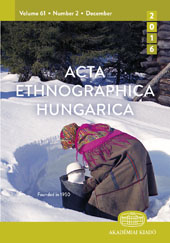A SEMIOTIC-AESTHETIC APPROACH TO THE ANALYSIS OF THE PRACTICE OF VERNACULAR ARCHITECTURE IN HUNGARY
A SEMIOTIC-AESTHETIC APPROACH TO THE ANALYSIS OF THE PRACTICE OF VERNACULAR ARCHITECTURE IN HUNGARY
Author(s): Imre GráfikSubject(s): Fine Arts / Performing Arts, Architecture, Geography, Regional studies, Semiology, Aesthetics
Published by: Akadémiai Kiadó
Keywords: vernacular architecture; architectural signs; semiotic-aesthetic approach;
Summary/Abstract: The spatial frame of the investigation is the Carpathian Basin and especially its Great Plain areas inhabited by Hungarian-speaking people; and the period it covers, which can be documented with buildings, is the 150–200 years from the second half of the 18th century to the first half of the 20th century. Examining all the elements of form which played a role in shaping the architectural image of the market town, it can be found that some of them are only barely, while others are very definitely expressions of the semiosis of market town architecture. The criteria of form are suitable for the simultaneous realisation of the following triadic relations: 1) the architectural functions archived through the technical-technological and structural solutions of building practice; 2) meanings related to the communicative nature of architecture; 3) representation of the architectural solutions of aesthetic content accepted by the taste of the community, artistic aesthetics (of architecture). As a final conclusion it can thus be said that a relative and absolute horizontal and vertical dynamics – realised with architectural signs and visually codable – operate in shaping the architectural image of the market town.
Journal: Acta Ethnographica Hungarica
- Issue Year: 59/2014
- Issue No: 2
- Page Range: 259-269
- Page Count: 11
- Language: English
- Content File-PDF

